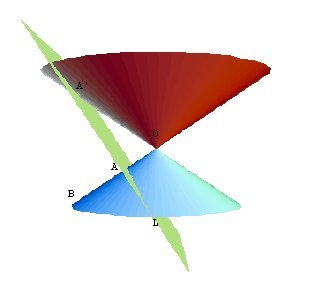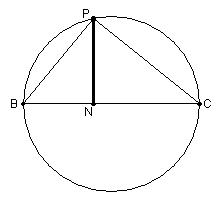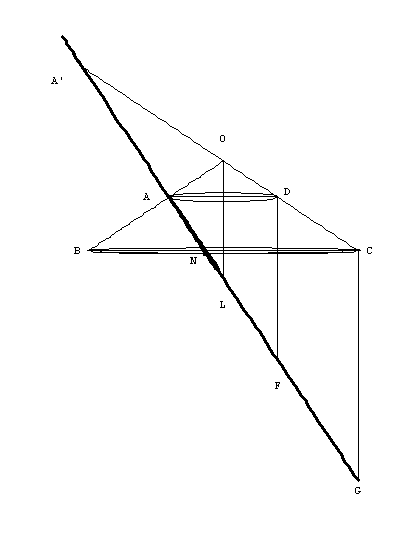- About MAA
- Membership
- MAA Publications
- Periodicals
- Blogs
- MAA Book Series
- MAA Press (an imprint of the AMS)
- MAA Notes
- MAA Reviews
- Mathematical Communication
- Information for Libraries
- Author Resources
- Advertise with MAA
- Meetings
- Competitions
- Programs
- Communities
- MAA Sections
- SIGMAA
- MAA Connect
- Students
- MAA Awards
- Awards Booklets
- Writing Awards
- Teaching Awards
- Service Awards
- Research Awards
- Lecture Awards
- Putnam Competition Individual and Team Winners
- D. E. Shaw Group AMC 8 Awards & Certificates
- Maryam Mirzakhani AMC 10 A Awards & Certificates
- Two Sigma AMC 10 B Awards & Certificates
- Jane Street AMC 12 A Awards & Certificates
- Akamai AMC 12 B Awards & Certificates
- High School Teachers
- News
You are here
Can You Really Derive Conic Formulae from a Cone? - Deriving the Symptom of the Obtuse-angled Cone

Next we consider the obtuse-angled cone with vertex O and a plane intersecting a generating line OB at a right angle at point A. The plane intersects the cone in the amblytome with diameter AG.
A dynamic view of this construction will be helpful in what follows.
[In order to open the dynamic view in a new window to allow you to show the text and the derivation side-by-side, right click or Ctrl-click on the link.]
 |
 |
Consider an arbitrary ordinate (i.e. y value) NP constructed on the axis at N. We wish to determine the relationship between NP and AN, that is, the symptom of the conic. The ordinate NP is located in a horizontal plane that cuts the cone in the circle with diameter BC. In this horizontal plane construct the segments BP and CP, which results in a right triangle inscribed in a semicircle. (The triangle is right by Elements, Book III, Proposition 20). We also know that triangles BNP and PNC are similar (by Book VI, Prop. 8) and this implies
|
|
|
|
|
(1) |
Now consider the similar triangles NAB and NCG in the axial plane plane through O, B, and C. The triangles are similar because they each have a right angle and opposite vertical angles. This in turn implies
|
|
|
|
or |
 |
|
|
(2) |
Combining (1) and (2) we have
|
|
(3) |
In the axial plane we also have similar triangles GCN and FDA, because they each have a right angle and they have another equal angle since AD is parallel to NC. (See Elements Book I, Prop. 29, a very famous proposition indeed. Follow the link to see why.) These similar triangles give us:
|
|
|
|
|
(4) |
Finally, in the same axial plane are the similar triangles A'NC and A'AD. The triangles are similar because AD is parallel to NC in triangle A'NC (see for example, Elements Book VI, Prop. 2). From this we have
|
|
|
|
|
|
|
|
(5) |
Rewriting (5) as  and combining with (3) yields
and combining with (3) yields
 ,
,
using the fact that AF = 2AL.
Just as in the last section, we can make this look more like the modern equation of a hyperbola by substituting x = AN, y = NP, 2a = AA', and p = 2AL. This gives us
 ,
,
which can be rewritten as the modern form of a hyperbola. (Do you see how?)
Gary S. Stoudt, "Can You Really Derive Conic Formulae from a Cone? - Deriving the Symptom of the Obtuse-angled Cone," Convergence (June 2015)

 or
or


 .
. or
or .
. or
or and combining with (4)
and combining with (4) .
.


